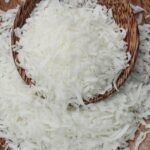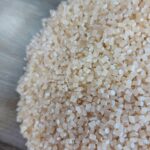CASHEW NUT SHELL OIL
In recent years, the demand for gluten-free products has surged, driven by health-conscious consumers and those with gluten intolerances. Noodles, a staple in many cultures, are no exception. However, creating gluten-free noodles that retain the desired texture and mouthfeel can be challenging. Modified tapioca starch has emerged as a key ingredient in overcoming these hurdles, offering numerous benefits for gluten-free noodle production.

Table of Contents
Toggle1. Enhancing Dough Elasticity
Gluten is typically responsible for the elasticity and structure in wheat-based noodles. In gluten-free products, the absence of gluten makes it difficult to achieve the same chewiness and elasticity. Modified tapioca starch mimics gluten’s functionality by improving the elasticity of the noodle dough. Its unique properties allow it to form a smooth, stretchy dough that holds its shape during the production process. This results in noodles with a firm, desirable texture that consumers expect.
2. Improving Texture and Bite
A key challenge in gluten-free noodle production is maintaining the ideal “bite” or firmness. Many gluten-free alternatives tend to become mushy or too soft after cooking. Modified tapioca starch helps noodles retain their firmness by improving water absorption and retention, leading to a consistent and resilient texture. It prevents over-softening, ensuring that gluten-free noodles can maintain the same al dente texture as traditional wheat-based noodles.
3. Stabilizing Noodle Structure
In gluten-free noodles, the structure can often be unstable due to the lack of gluten proteins that bind the ingredients together. Modified tapioca starch acts as an excellent stabilizer, forming a network that enhances the noodle’s overall structure and reduces breakage during both production and cooking. This makes it an indispensable ingredient for manufacturers aiming to produce gluten-free noodles at scale without sacrificing quality.
4. Improving Shelf Life
Modified tapioca starch also plays a significant role in extending the shelf life of gluten-free noodles. Its moisture-retention properties prevent the noodles from drying out during storage. Additionally, it reduces retrogradation, a process where starch molecules revert to a crystalline structure, which can make noodles tough and undesirable after storage. By minimizing retrogradation, modified tapioca starch helps gluten-free noodles remain fresh and palatable for longer periods.
5. Cost-Effective and Versatile
Modified tapioca starch is not only effective but also cost-efficient compared to other gluten-free starch alternatives. It is readily available and can be modified to meet specific needs in noodle production, such as texture adjustment or enhanced stability. Its versatility makes it suitable for various types of noodles, from fresh to dried, offering manufacturers flexibility in product development while keeping costs under control.

Conclusion
Modified tapioca starch is a game-changer in the production of gluten-free noodles, providing essential benefits that help replicate the qualities of traditional wheat-based noodles. From enhancing dough elasticity and texture to improving shelf life and cooking performance, it is a crucial ingredient that ensures gluten-free noodles meet the high expectations of today’s discerning consumers. For manufacturers, the cost-effectiveness and versatility of modified tapioca starch make it an invaluable tool in creating high-quality, gluten-free noodle products that stand out in a competitive market.












